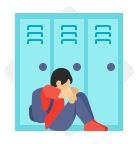The Florida school system have been in the news a lot lately. Even though much that is said is negative, it turns out, our schools actually grade fairly well. When you look past the headlines and dig into the data, it seems things aren’t bad at all. In fact, this new report from Wallethub shows that Florida has the 9th best school system in America.
In order to determine the best school systems in America, WalletHub compared the 50 states and the District of Columbia across 32 key measures of quality and safety. The data set ranges from pupil-teacher ratio and dropout rate to median standardized-test scores. We’ll break down fully where the numbers come from in a bit, but here’s the snapshot.
Quality & Safety of Schools in Florida (1=Best; 25=Avg.):
- 17th – Math Test Scores
- 7th – Reading Test Scores
- 9th – Dropout Rate
- 8th – Bullying Incidence Rate
- 15th – % of Threatened/Injured High School Students
- 1st – Existence of Digital Learning Plan
All very respectable numbers. Also, as you plan for Back To School, keep in mind that this is the Tax Free Week for school supplies in Florida. Prices have gone up on everything, so save where you can.
Now, unlike other research that focuses primarily on academic outcomes or school finance, WalletHub’s analysis takes a more comprehensive approach. It accounts for performance, funding, safety, class size and instructor credentials. To determine the top-performing school systems in America, WalletHub compared the 50 states and the District of Columbia across 32 key metrics.









